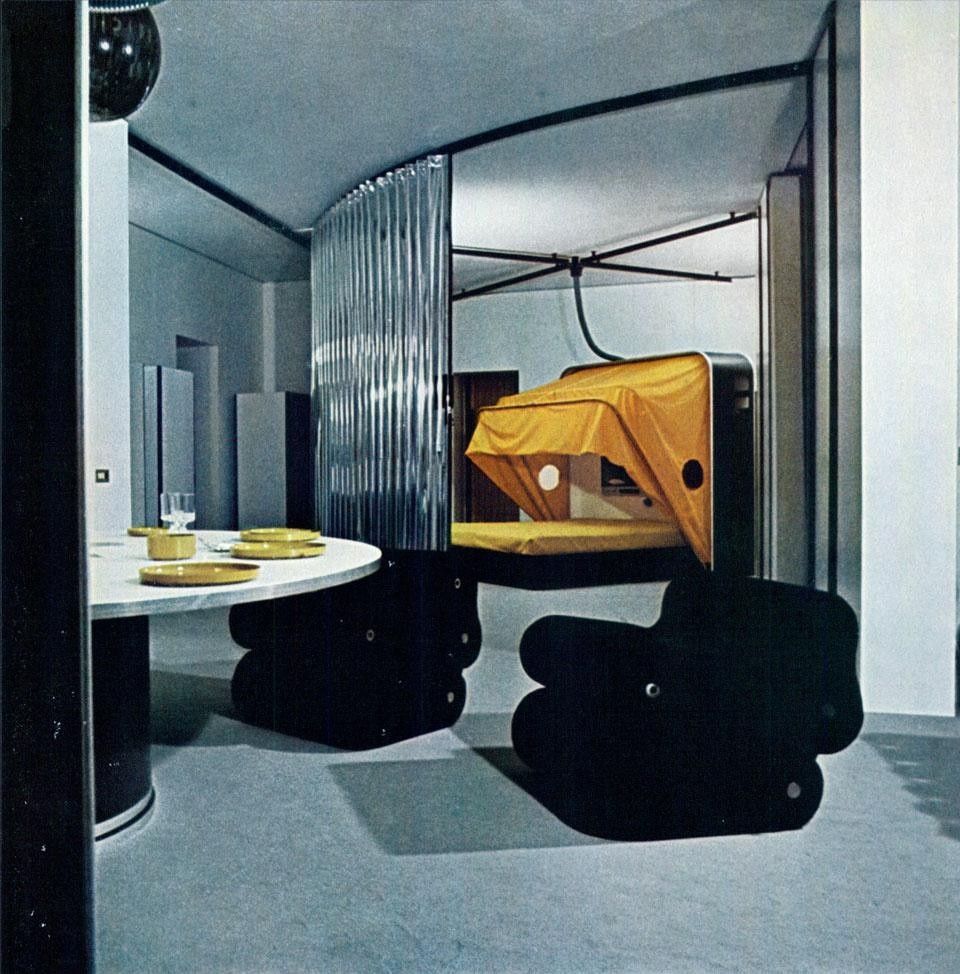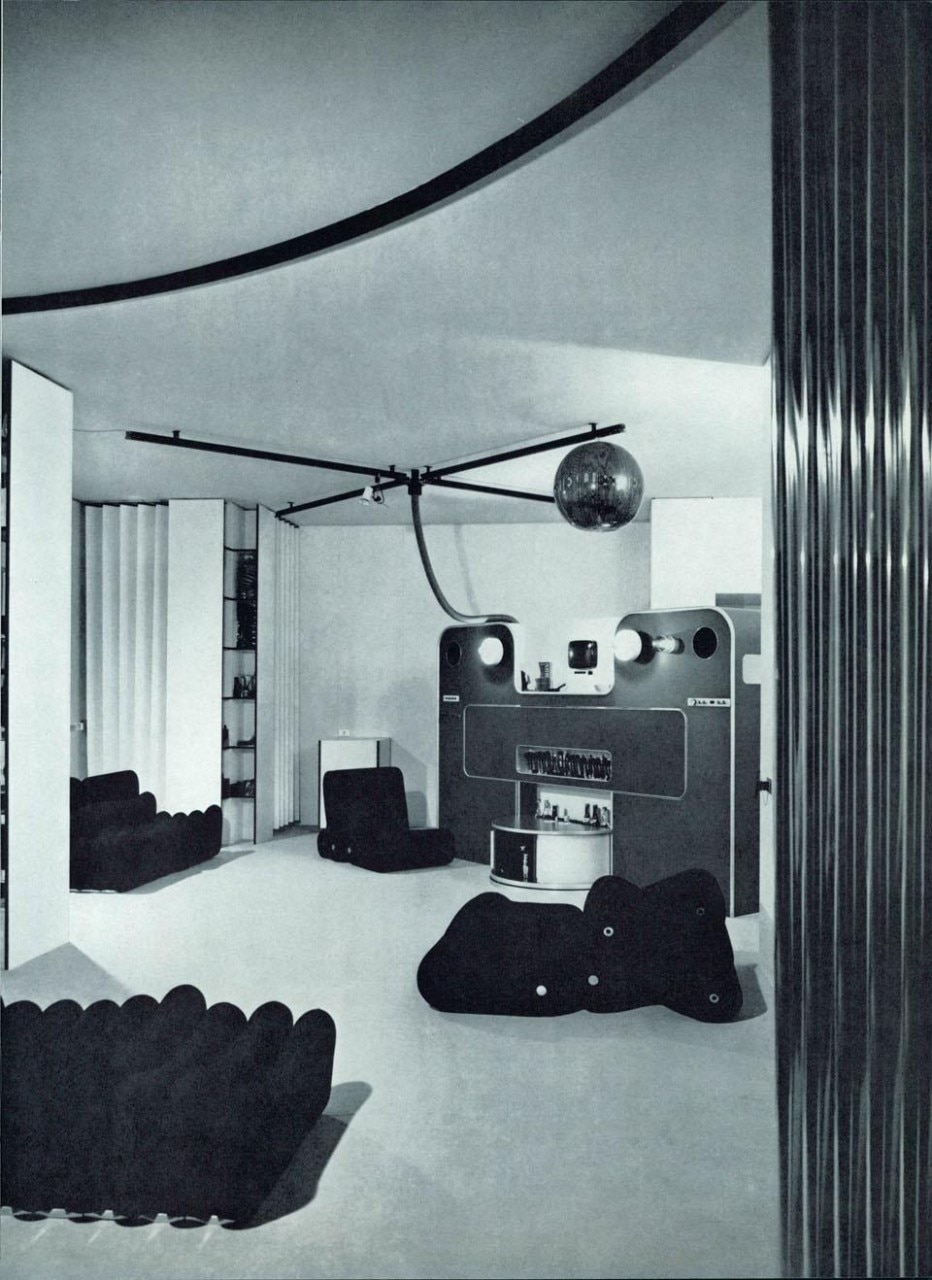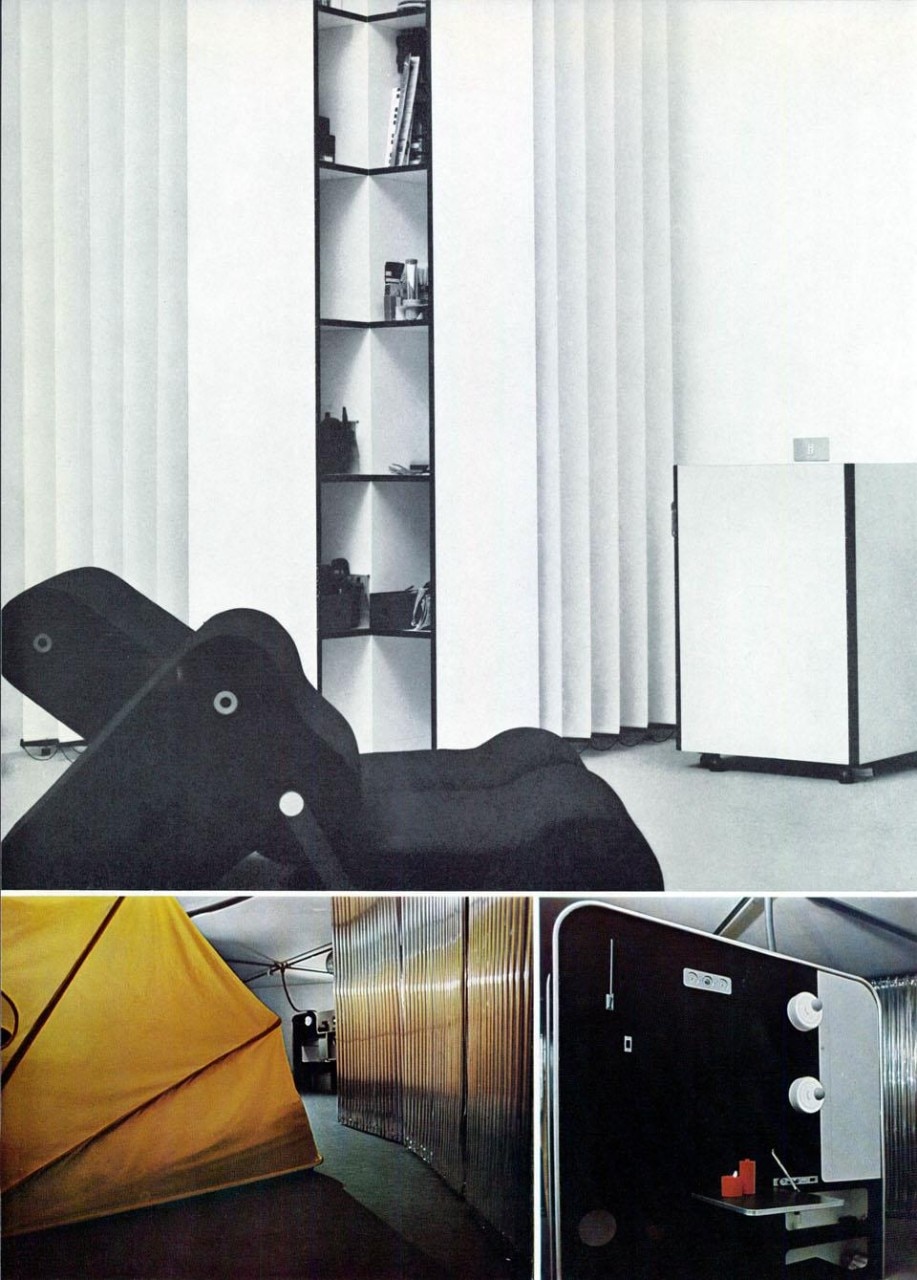This is the house that Joe Colombo created for himself and his wife. A house-prototype. A house for entertaining and showing. In which Colombo experiments, and illustrates, his inventiveness.
What impassioned him here is the idea of the two large 'machines' for sleeping and eating; he transformed the two 'zones' of the house into two 'objects,' two pieces of equipment that can be placed in a single environment.
Dramatically evident but secret, the folding bed is sealed like a capsule and the revolving table is 'hidden.' They can coexist within a single space where the sliding wall becomes a temporary diaphragm. But these two 'machines,' these two huge 'appliances' with dashboards, instrumentation, programs, signals are nothing less than toys. Fantasy and fun prevail.


Because we live in a civilization conditioned by television, it is right that even here it is possible to eat while watching the video.



